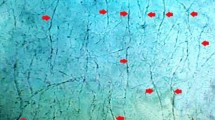Summary
We built models of sperm competition and compared their predictions with observations from domestic chickens in an attempt to elucidate the mechanism of sperm competition. The models suggest that (1) observed levels of precedence of sperm are not merely a passive consequence of the greater mortality of sperm from earlier inseminations; (2) displacement of existing sperm from sperm storage tubules by incoming sperm explains observed levels of sperm precedence and disappearance from the reproductive tract, even in the absence of recognition of sperm from different inseminations; (3) stratification of sperm within the sperm storage tubules fails as an explanation of observed patterns of sperm precedence and disappearance because long-term levels of sperm precedence as high as those observed can only be predicted in combination with rates of disappearance of sperm much lower than those observed in chickens. The predictions of sperm precedence levels following multiple inseminations also suggest that displacement rather than stratification is the most likely mechanism of sperm competition in chickens. We discuss the consequences of male or female control of sperm competition, non-uniform distribution of sperm between sperm storage tubules, and variation in sperm precedence with time after the last insemination, and suggest ways in which the models may be used in future to aid in the elucidation of mechanisms of sperm competition.
Similar content being viewed by others
References
Austad SN (1984) Evolution of sperm priority patterns in spiders. In: Smith RL (ed) Sperm competition and the evolution of animal mating systems. Academic Press, New York, pp 233–249
Bakst MR (1983) Fate of turkey spermatozoa after intrainfundibular and intramagnal inseminations. J Reprod Fertil 67:315–317
Bakst MR (1987) Anatomical basis of sperm storage in the avian oviduct. Scan Microsc 1:1257–1266
Birkhead TR (1988) Behavioural aspects of sperm competition in birds. Adv Stud Behav 18:35–72
Birkhead TR, Atkin L, Moller AP (1987) Copulation behaviour in birds. Behaviour 101:101–138
Birkhead TR, Lessells CM (1988) Copulation behaviour in ospreys Pandion haliaetus. Anim Behav 36:1672–1682
Birkhead TR, Pringle S (1986) Multiple mating and paternity in Gammarus pulex. Anim Behav 34:611–613
Birkhead TR, Pellatt JE, Hunter FM (1988) Extra-pair copulation and sperm competition in the zebra finch. Nature 334:60–62
Cheng KM, Burns JT, McKinney F (1983) Forced copulation in captive mallards. III. Sperm competition. Auk 100:302–310
Compton MM, Van Krey HP (1979) A histological examination of the uterovaginal sperm storage glands in the domestic hen following an insemination with variable semen doses. Poult Sci 58:478–480
Compton MM, Van Krey HP, Siegel PB (1978) The filling and emptying of the uterovaginal sperm-host glands in the domestic hen. Poult Sci 57:1696–1700
Davies NB (1983) Polyandry, cloaca-pecking and sperm competition in dunnocks. Nature 302:334–336
Gwynne DT (1988) Courtship feeding in katydids benefits the mating males offspring. Behav Ecol Sociobiol 23:373–377
Johnson AL (1986a) Reproduction in the female. In: Sturkie PD (ed) Avian physiology. Springer, Berlin Heidelberg New York, pp 403–431
Johnson AL (1986b) Reproduction in the male. In: Sturkie PD (ed) Avian physiology. Springer, Berlin Heidelberg New York, pp 432–451
Ono T, Siva-Jothy MT, Kato A (1989) Removal and subsequent ingestion of rivals semen during copulation in a tree cricket. Phys Ent 14:195–202
Otronen M (1988) Studies of reproductive behaviour of some common insects. Unpubl D Phil thesis, Oxford University
Parker GA (1970a) Sperm competition and its evolutionary consequence in the insects. Biol Rev 45:525–567
Parker GA (1970b) Sperm competition and its evolutionary effect on copula duration in the fly Scatophaga stercoraria. J Insect Physiol 16:1301–1328
Parker GA (1974) Courtship persistence and female-guarding as male time investment strategies. Behaviour 48:157–184
Parker GA (1984) Sperm competition and the evolution of animal mating strategies. In: Smith RL (ed) Sperm competition and the evolution of animal mating systems. Academic Press, Orlando, Florida, pp 1–60
Pierson EEM, Krista LM, McDanial GR (1988) Effect of age and physiological status on sperm storage 24 h after artificial insemination in broiler breeder hens. Brit Poult Sci 29:193–197
Press WH, Flannery BP, Teukolsky SA, Vetterling WT (1986) Numerical recipes: the art of scientific computing. Cambridge University Press, Cambridge
Rohlf FJ, Sokal RR (1969) Statistical tables. Freeman, San Francisco
Shugart GW (1988) Uterovaginal sperm-storage glands in sixteen species with comments on morphological differences. Auk 105:379–384
Silberglied RE, Shepherd JG, Dickinson JL (1984) Eunuchs: the role of apyrene sperm in Lepidoptera? Am Nat 123:255–265
Siva-Jothy MT, Tsubaki Y (1989) Variation in copulation duration in Mnais pruinosa pruinosa Selys (Odonata: Calopterygidae). l. Alternative mate-securing tactics and sperm precedence. Behav Ecol Sociobiol 24:39–45
Van Krey HP, Balander RJ, Compton MM (1981) Storage and evacuation of spermatozoa from the uterovaginal sperm-host glands in the domestic fowl. Poult Sci 60:871–878
Waage JK (1979) Dual function of the damselfly penis: sperm removal and sperm transfer. Science 203:916–918
Walker WIT (1980) Sperm utilization strategies in non-social insects. Am Nat 115:780–799
Warren DC, Gish CL (1943) Value of artificial insemination in poultry breeding work. Poult Sci 22:108–117
Wishart GJ (1987) Regulation of the length of the fertile period in the domestic fowl by numbers of oviducal spermatozoa, as reflected by those trapped in laid eggs. J Reprod Fertil 80:493–498
Zavaleta D, Ogasawara F (1987) A review of the mechanisms of the release of spermatozoa from storage tubules in the fowl and turkey oviduct. World's Poult Sci J 43:132–139
Author information
Authors and Affiliations
Additional information
Offprint requests to: C.M. Lessells
Rights and permissions
About this article
Cite this article
Lessells, C.M., Birkhead, T.R. Mechanisms of sperm competition in birds: mathematical models. Behav Ecol Sociobiol 27, 325–337 (1990). https://doi.org/10.1007/BF00164003
Received:
Accepted:
Issue Date:
DOI: https://doi.org/10.1007/BF00164003




